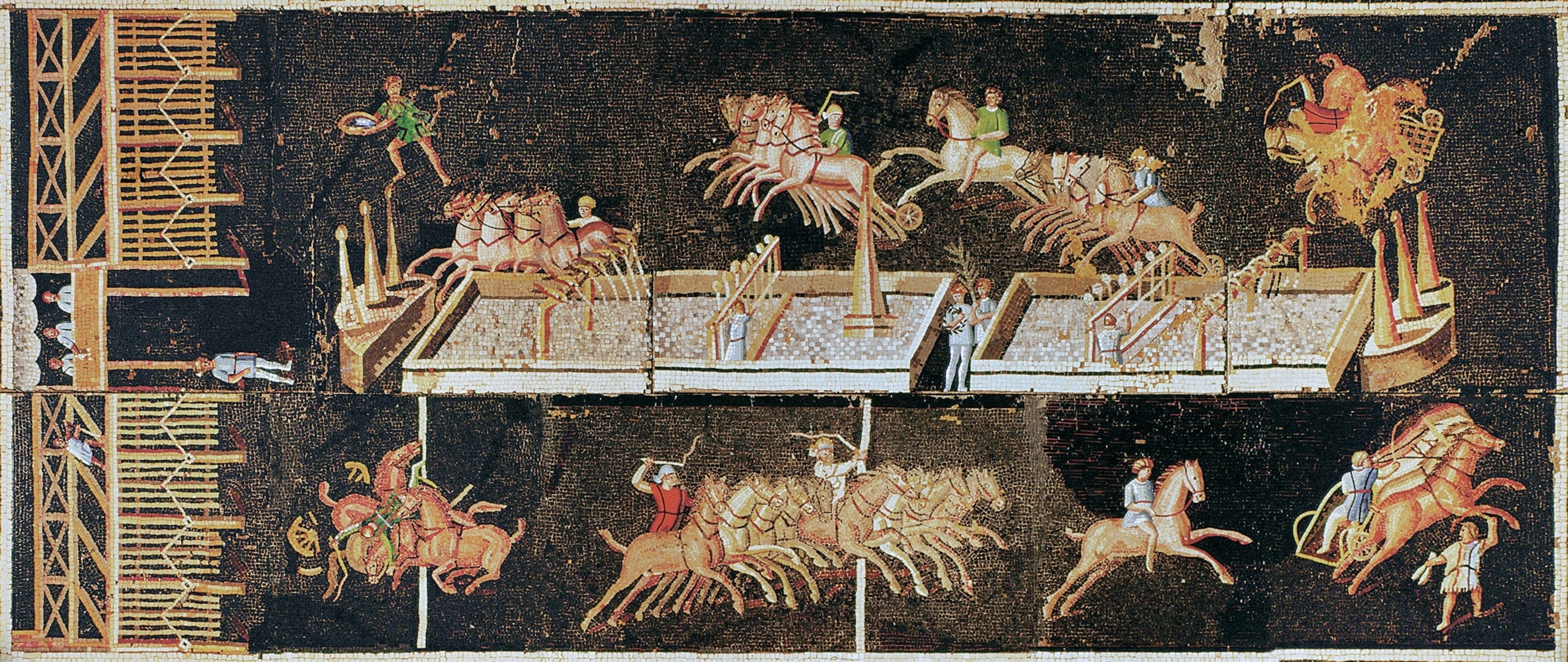The roar of the crowd, the thrill of the race, the intense rivalries – these are elements common to both ancient Roman chariot racing and modern NASCAR. While separated by centuries, a closer look reveals surprising parallels between these two seemingly disparate spectacles. This article delves into the similarities and differences, exploring whether Roman chariot racing can truly be compared to NASCAR.
The Spectacle of Speed and Danger
Roman chariot racing, held in massive venues like the Circus Maximus, captivated audiences with its breakneck speeds and inherent dangers. Charioteers, often slaves or lower-class citizens, risked life and limb navigating treacherous turns and jostling for position. Similarly, NASCAR drivers push their powerful machines to the limit, navigating high-speed ovals with the constant threat of crashes and collisions. Both sports offered (and offer) a visceral thrill to spectators, drawn to the spectacle of speed and the potential for disaster.
A mosaic depicting the chaotic scene of a Roman chariot race.
Teams, Colors, and Fanatical Fandom
Roman chariot racing featured four main factions: the Reds, Whites, Blues, and Greens. Each team boasted devoted fans who displayed passionate loyalty, often erupting into violence and riots. This intense factionalism mirrors the passionate fan bases of NASCAR, where drivers and teams inspire fierce allegiance. While NASCAR fans might not resort to the same level of violence as their Roman counterparts, the fervor and dedication remain strikingly similar. The colors and symbols of Roman teams provided a visual identity, much like the logos and sponsorships that adorn modern NASCAR vehicles.
Ancient drinking glasses adorned with racing motifs, showcasing the popularity of the sport.
Beyond the Sport: Political and Social Influence
Roman chariot racing was deeply intertwined with politics and social control. The games provided a distraction for the masses and a means for emperors and politicians to curry favor. The influential Roman orator Cicero, despite acknowledging the importance of the games, criticized the practice of using lavish entertainment to manipulate public opinion. This resonates with the way modern sports, including NASCAR, can be leveraged for political and commercial gain. NASCAR’s popularity has been harnessed by politicians and businesses alike, using the sport’s platform to reach a broad audience.
A papyrus fragment detailing a day’s racing program, highlighting the organized nature of the events.
A Legacy of Entertainment
While the chariots and horsepower may differ, the underlying human fascination with speed, competition, and spectacle remains constant. Both Roman chariot racing and NASCAR represent powerful forms of entertainment that transcend their respective eras. They showcase the enduring appeal of thrilling competition and the unwavering passion of dedicated fans. Though separated by time, the echoes of roaring crowds and the thrill of victory connect these two iconic sports. The comparison between Roman chariot racing and NASCAR offers a fascinating glimpse into the enduring human fascination with competition and spectacle.

